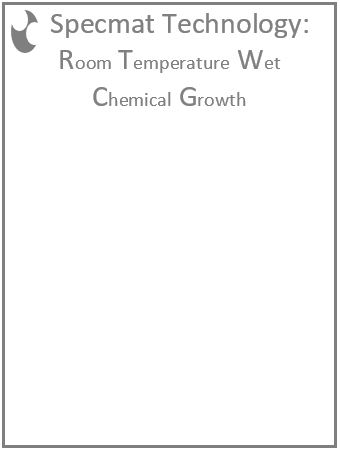 | ||
|
| ||
 |

The Specmat RTWCG Technology The Room Temperature Wet
Chemistry Growth (RTWCG) technology is a novel technology for growing highly
uniform amorphous SiOx layers into silicon substrates. It can be broken down
into two kinds of applications: as a chemical etchant and as a SiOx growth
chemistry.
In PV, the RTWCG etch
technology can be utilized in various ways such as:
dead layer etching, surface etching for selective emitter applications,
and as a junction isolation process. The SiOx growth technology can be used to
improve the optical properties of solar cells, to mitigate PID, and to increase
passivation when used in, for instance, a SiNx/SiOx stack.
Additionally, the oxide can be grown to a sufficient thickness to be used
in applications that require the use of a mask or even an
antireflection
coating.
For the photovoltaic (PV)
industry, the technology can be applied to, either or both, the front and rear
side of the solar cell to yield the following:
o
Front side
silicon nitride (SiNx)/SiOx passivation and anti-reflection stack;
o
Front side
SiOx passivation and anti-reflection coating (ARC);
o
Rear side
parasitic emitter etch for junction isolation;
o
Rear side
SiOx passivation layer growth;
o
Rear side
SiOx optical layer;
o
Diffusion
barrier layer. The following cell
architectures for both N-type and P-type substrates:
o
Passivated
emitter and rear totally diffused (PERT);
o
Passivated
emitter and rear cell (PERC);
o
Passivated
emitter and rear local back surface field (PERL);
o
Inter-digitated back contact cell (IBC);
o
Bi-facial. All processes etch and/or
grow SiOx uniformly on both mono and multi substrates.
The etch depth, oxide thickness and growth rate can all be tightly
controlled to enable device optimization and varying architectures. | |
|
© 2009 SPECMAT, Inc. All Rights Reserved | ||